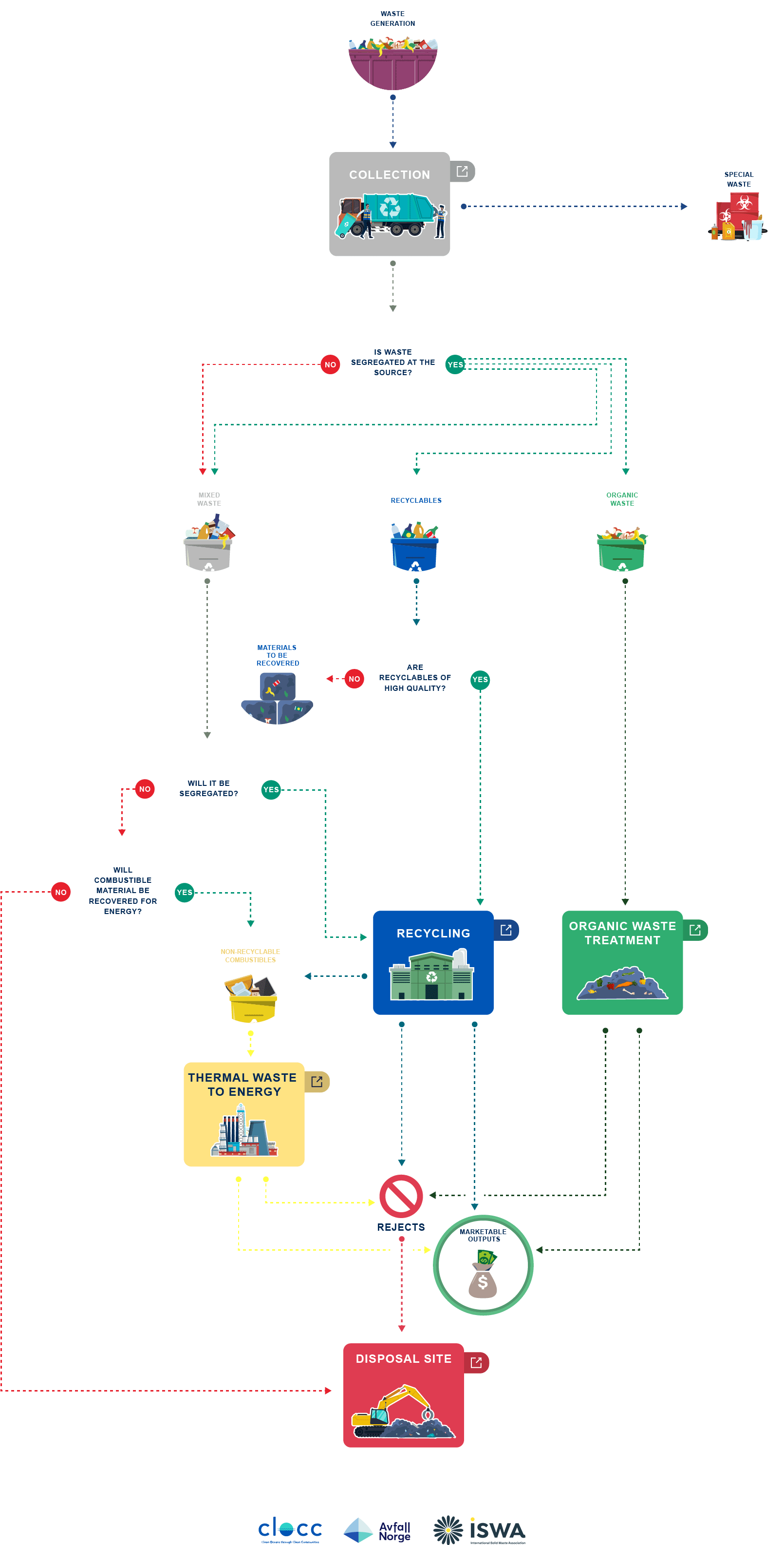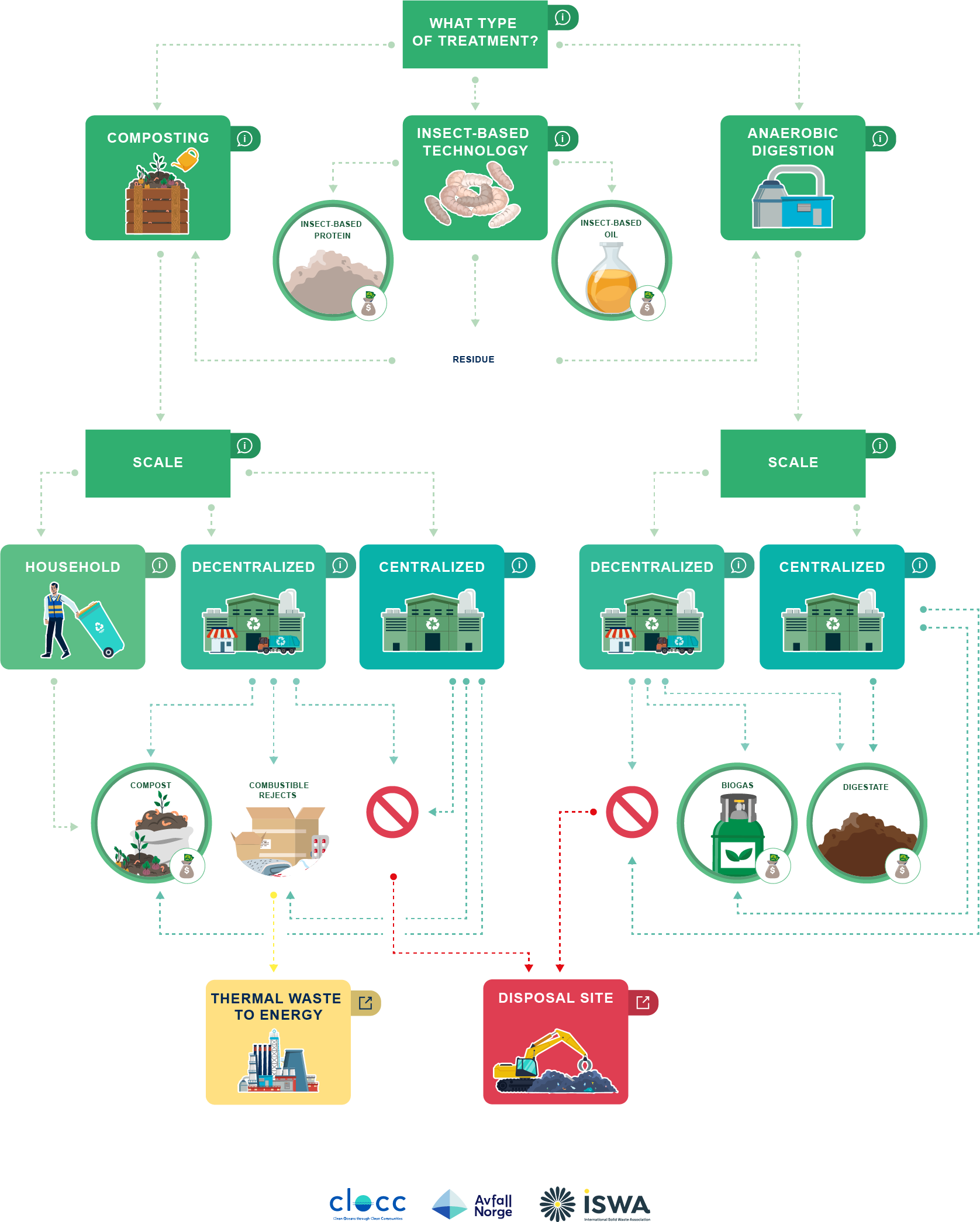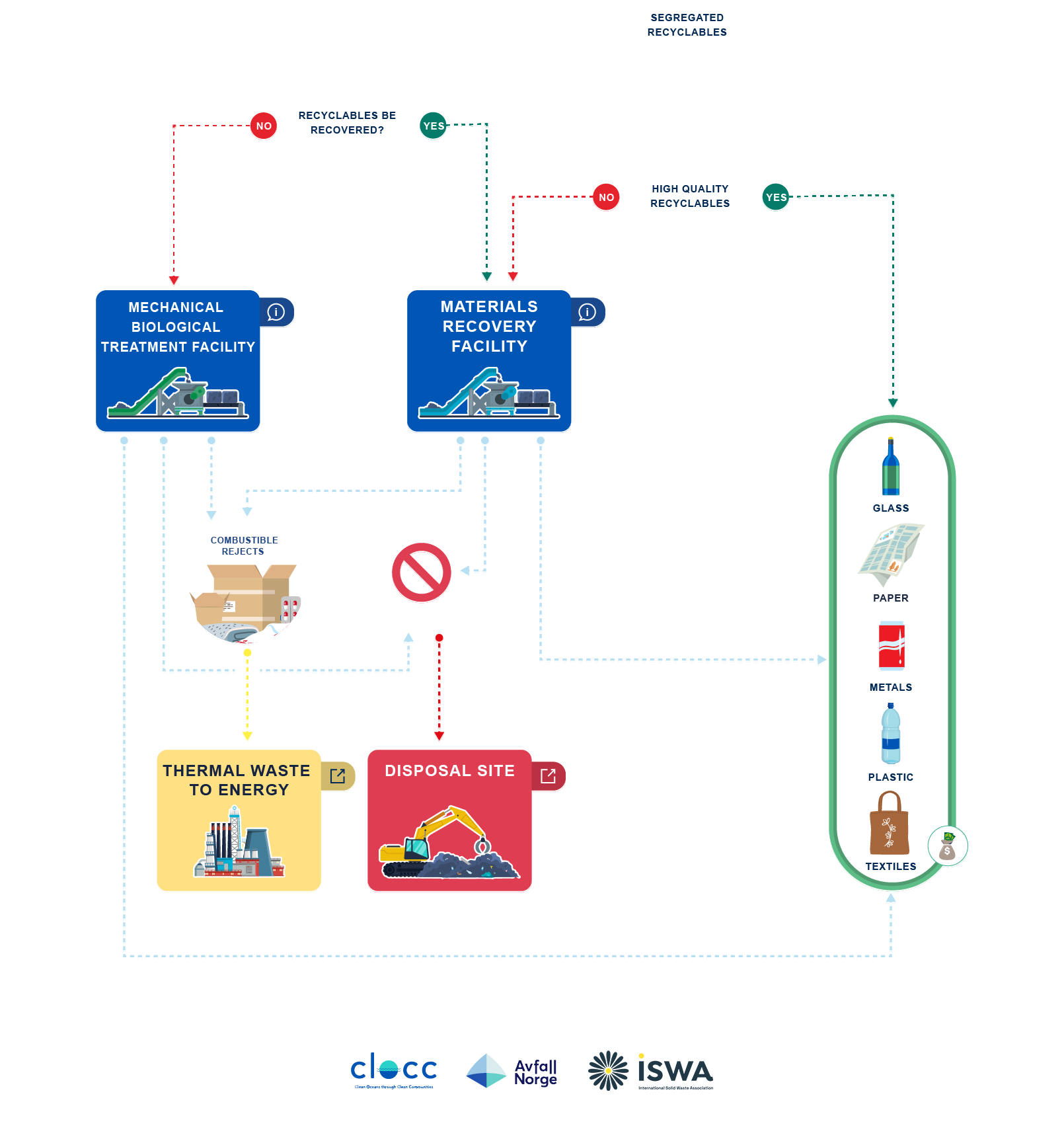Vehicle type
- Handcarts
- Pedal bikes/tricycles
- Animal carts
Considerations
- Non-motorized
- Least cost
- Navigable on small roads
- Ideal for numerous stops
- Ideal for frequent (e.g., daily) collection with low quantities
- Low capacity
Vehicle type
- Motorized tricycles
- Tractors-trailer systems
- Trucks
Considerations
- Motorized
- Ideal for fewer stops
- Ideal for less frequent (e.g., weekly) collections with large volumes of waste
- Mid to large capacity
Vehicle type
- Fore and aft tippers
Considerations
- Most Expensive
- Most Capacity
- Fewer Stops
- Ideal for less frequent (e.g., weekly) collections with large volumes of waste
- Large capacity







